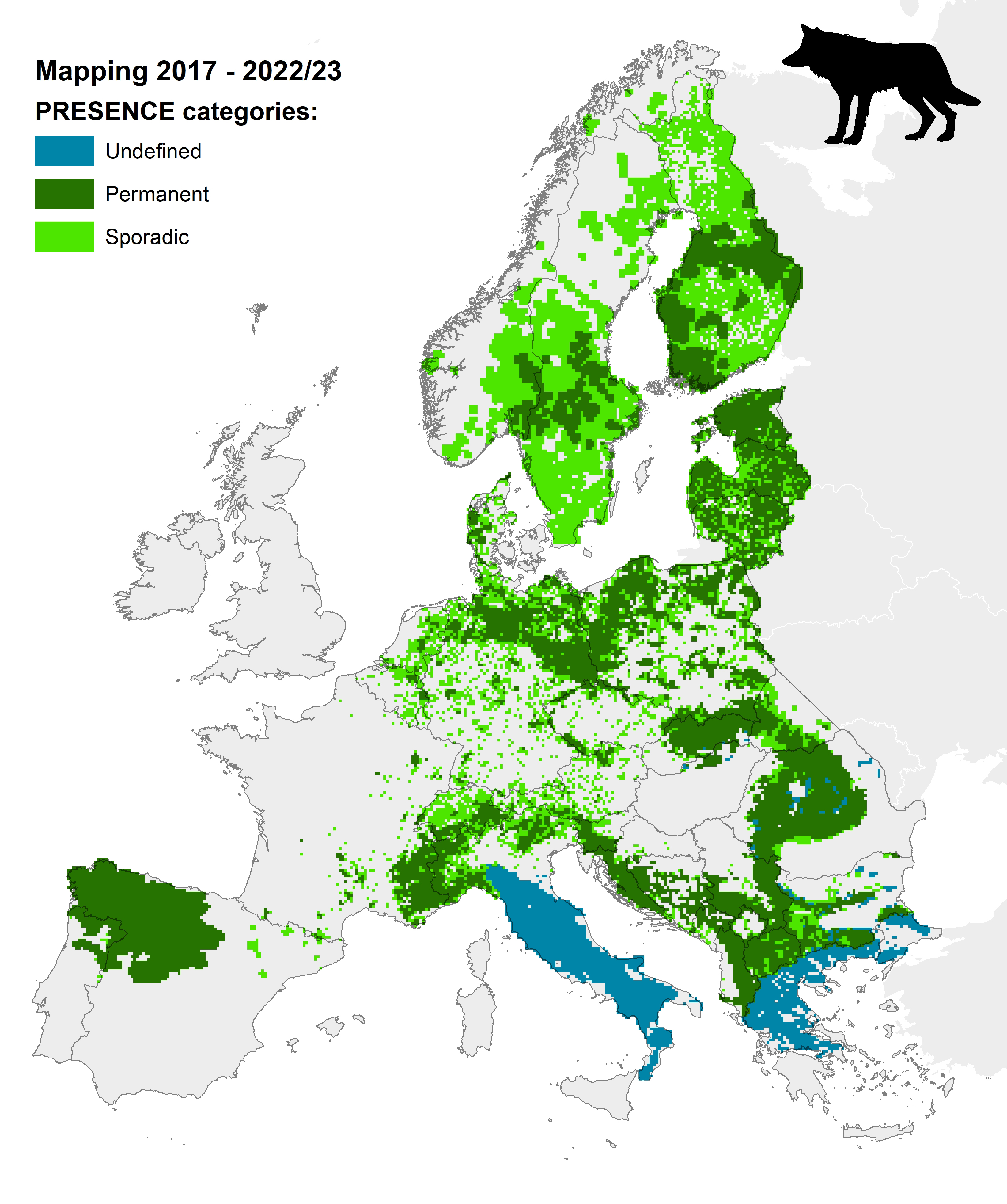Threats:
(1) Some populations (e.g. Scandinavia) are small and isolated, and are therefore at risk.
(2) Human tolerance is often very low, especially in areas where wolves return after an absence. Wolf depredation on livestock and competition with hunters for wild ungulates create obvious conflicts. People often fear wolves, and in many cases wolves become symbols of a range of other conflicts between rural and urban areas. This is also leading to wolf conservation becoming a political issue in many countries.
(3) Human caused mortality is the most important factor affecting wolves, from poaching and hunting. It is vital to combat poaching and ensure that hunting and lethal control are kept within sustainable limits.
Distribution:

Distribution maps 2012-2016 available from Data Dryad and 2017-2022/23 Data Dryad
Status:
c. 23,000 in Europe (Source: LCIE Status Assessment 2017-2022/23)
9 populations
|
Population name
|
Countries
|
Size (2017-2022/23)
|
Trend
|
|
Scandinavian
|
Norway, Sweden
|
520
|
Increase
|
|
Karelian
|
Finland
|
310
|
Increase
|
|
Baltic
|
Estonia, Latvia, Lithuania, Poland
|
c. 3000
|
Increase
|
|
Central European
|
Germany, Poland, Netherlands, Denmark, Belgium, Luxembourg, Austria, Czech Republic
|
c. 3000
|
Increase
|
|
Carpathian
|
Slovakia, Czech Republic, Poland, Romania, Hungary, Serbia
|
c. 4000
|
Unknown
|
|
Dinaric-Balkan
|
Slovenia, Croatia, Bosnia & Herzegovina, Montenegro, North Macedonia, Albania, Serbia, Kosovo*, Greece, Bulgaria
|
c. 4700
|
Increase
|
|
Alps
|
Italy, France, Switzerland, Austria, Slovenia, Germany
|
c. 2000
|
Increase
|
|
Italian peninsula
|
Italy
|
2557
|
Increasing
|
|
Iberian
|
Spain, Portugal
|
c. 2400
|
Stable
|
|
Sierra Morena
|
Spain
|
0
|
Extinct
|